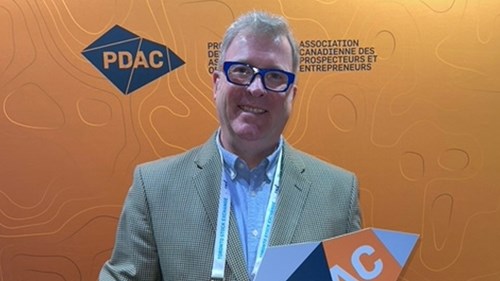
Last week in Toronto, the PDAC 2024 Convention took place, affirming its status as the premier global event for those involved in mineral exploration and mining.
With a legacy that stretches back to 1932, this award-winning convention has become the bedrock event for the international mineral industry. Renowned for its comprehensive educational programs, unmatched networking opportunities, business development avenues, and engaging agenda, the PDAC 2024 Convention serves as a crucial platform for industry professionals to come together, share insights, and shape the future of the mining sector.
In this article, Carl Bosman shares insights from his attendance, reflecting on his expertise and his discussions around the industry's evolving challenges and opportunities.
Economic Outlook and Interest Rates
The sentiment among Financiers at PDAC 2024 suggests a cautious outlook for North America, with expectations of a recession, albeit less aggressive than previously feared.
The anticipation is for the U.S. economy to show signs of improvement by Q2 2025.
However, in the interim, a rise in interest rates is expected, which could soften the economic landscape. Despite these challenges, the environment is not predicted to be as tough as it has been, offering a glimmer of hope for the future.
Demand for Critical Metals
Critical metals remain in demand, with copper, uranium, and gold highlighted as focus metals. The drive towards electric vehicles (EVs) continues unabated, but the absence of a dominant battery technology is expected to keep lithium prices in check. Sodium-iron battery technology is gaining attention due to the accessibility of its components. Additionally, graphite, cobalt, and nickel are under the spotlight, with a growing consensus on the need for the West to diminish Asia and China's dominance in battery manufacturing. 70% of batteries are made in the region, where the majority of nickel and lithium is mined. Nickel is largely produced in Indonesia using coal fired energy, similar to China - so the energy source creates a dirty mineral commodity, which financiers feel must change. These production methods, particularly in Indonesia and China, raise concerns over the environmental impact, emphasising the need for cleaner mineral commodities.
The Importance of ESG
Environmental, Social, and Governance (ESG) considerations remain a priority for investors, who are looking beyond mere greenwashing to genuine corporate responsibility.
An ESG plan is now a prerequisite for financing, with a focus on the tangible actions taken by explorers and miners in their project locations. This shift underscores the importance of not only securing investment but also demonstrating a real commitment to the welfare of employees and communities.
Additionally, financiers and investors are increasingly recognizing that finding the best or top technical skills presents a significant challenge, further emphasising the need for a holistic approach to sustainability and expertise in the sector.
Workforce Challenges and Diversity
The mining industry faces challenges in attracting younger talent and is experiencing a wave of retirements. Competition from the ICT/DotCom sectors and industries related to the green economy is intense, as these areas often promise quicker returns. The sector is urged to embrace greater diversity, including more significant representation of women and indigenous communities, to combat discrimination and abuse effectively. There is a big drive here to stamp out discrimination and abuse, as uncovered by a mining major’s study.
Project Financing Hurdles
Financiers are observing that mining projects are becoming increasingly complex, not only geologically, as seen with moly-copper porphyries, but also due to challenges such as more variable and extreme weather conditions, volatile commodity prices, and geopolitically sensitive locations.
Additionally, many new projects are situated in non-mining jurisdictions where local communities are unfamiliar with or do not understand mining practices. These factors collectively heighten the risk for financiers and investors, complicating the process of securing funding or capital for projects.
Moreover, rising interest rates have escalated capital expenditure (capex) costs, making mining projects more expensive to undertake. This increase in costs extends to labour, as workers seek higher wages, further influencing the overall financial demands of mining operations. Given that mining requires a long-term investment outlook, the stability of environmental conditions becomes crucial in attracting and retaining investors.
A Lack of Capital
The mining sector continues to face a shortage of capital, a situation that may stem from competing for capital with other sectors that offer higher returns, such as the DotCom industry. Despite the essential role of mining in extracting valuable resources the world relies on, securing funding has become increasingly challenging, exacerbated by the issues outlined previously.
Investment bankers acknowledge the difficulty in attracting capital, yet remain optimistic about finding financing solutions for viable projects. Junior mining companies and explorers, in particular, find it hard to secure investment, with private equity (PE) firms and family offices showing a preference for projects with less than a 10% success rate of becoming operational mines. While North American pension funds have traditionally supported these ventures, there is a noticeable shift towards Australian superannuation funds stepping in to finance mining projects destined for production in the USA, Canada, and Latin America.
Reflecting on the discussions and themes from PDAC 2024, it's clear that the mining sector stands at a pivotal moment, facing a mix of significant challenges and bright opportunities.
My engagement at the convention highlights the importance of several critical focus areas for our industry: fostering economic resilience, responding to the increasing demand for critical metals, committing genuinely to ESG principles, enhancing workforce diversity and inclusion, and overcoming the complexities of project financing.
Among these, a theme that runs through them all is the crucial need for securing senior talent to navigate these challenges effectively.
The path forward for the mining industry is not just about innovation and sustainability; it's also fundamentally about leadership. The right senior talent can drive change, inspire teams, and implement the strategic vision necessary for long-term success.
As we look to the future, the mining sector's ability to adapt to its evolving landscape will hinge on our collective ability to attract, develop, and retain senior talent who can lead the way in economic resilience, ESG commitments, diversity and inclusion, and navigating financial complexities.
For those keen to explore these topics further or seeking strategic advice on senior talent acquisition and leadership challenges, I am eager to share my insights and expertise - do get in touch.




